10 Things Acne Means About Your Health:
The skin on your face has a unique set of characteristics that are different than any other areas of skin on the body. Dermatologists have found that distinctions in blood flow, pH level, temperature, moisture, oil content and other characteristics reveal information about the health of other regions of the body (1).
The location of blemishes and other changes on your face’s skin is a result of a distinct relationship with distant tissues or organs. This practice is known as face mapping and has been traditionally used in Chinese Medicine to identify health complications and treat chronic disease before it develops (2).
Although common in childhood and adolescence, acne breakouts can occur at any age due to the various factors that cause this dermatologic condition. Acne affects the skin of over 45 million people in the United States alone (3). If you are experiencing breakouts or abnormal skin changes in any of the following 10 regions of the face, here is insight into what the teachings of face mapping suggests about your health.
What is Acne?
Acne develops as a result of blockages in the follicles with sebum and keratin. Sebum is produced by sebaceous glands. Enlargement of sebaceous glands and an increase in sebum production clogs the follicles. This increases the ‘acne bacteria’ (Propionibacterium Acnes) in the pores and that in turn causes inflammation.
The inflammation than wears down the protective skin barrier and makes the pore more susceptible to colonization by opportunistic bacteria, such as staphylococcus aureus. This creates further inflammation and pus formation that we call a “pimple.”
In humans sebaceous glands occur over much of the body. They are usually associated with hair follicles and are particularly well developed in certain areas such as the scalp, face, upper back and chest. Hence you get more acne in these areas. Each region can also indicate a particular organ system that is not working properly.
Gut-Skin Connection:
Research shows that there is a clear relationship between gut problems and skin disorders such as acne, eczema and rosacea. A 2008 study reported that small intestinal bacterial overgrowth (SIBO), was 10 times more prevalent in individuals suffering with acne and rosacea than in groups without these skin disorders. The study also showed that the eradication of the SIBO created an almost complete regression of symptoms (4).
One study involving over 13,000 adolescents showed that those with acne were more likely to experience gastrointestinal symptoms such as constipation, halitosis, and gastric reflux. In particular, abdominal bloating was 37% more likely to be associated with acne and other skin related disorders such as eczema and rosacea (5).
Research has shown that as many as 40% of those with acne have hypochlorhydria (6). When one has less than adequate stomach acid the body is unable to effectively disinfect the food it consumes. This increases the microbial load on the body which stresses the immune system.
In addition, the lack of stomach acid sets the stage for migration of bacteria from the colon towards the distal portions of the small intestine, as well as an alteration of normal intestinal microflora (7).
Another study with over 80 patients showed that those with acne had higher reactivity to lipopolysaccharide (LPS) endotoxins in the blood. LPS is the microbial waste from gram negative bacteria such as E Coli. The healthy control group did not react to the LPS, but 65% of the acne patients had a reaction (8).

1. Chin and Jaw:
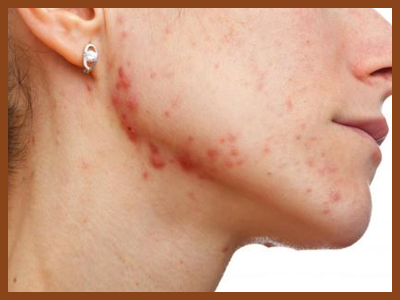
Possible Health Indication: Hormonal imbalances
This area can have some of the more stubborn acne that is painful, larger and often fluid-filled. Candida overgrowth may be to blame for the development of acne in this area and food “enemies” such as sugar, flour, wine and dairy can aggravate the problem.
This type of acne is associated with an imbalance of hormones. In women, disturbances here may arise around the time of one’s menstrual cycle but it may also indicate a more severe problem such as polycystic ovary syndrome (9).
2. Lower Lip:

Possible Health Indication: Digestive dysfunction and/or parasitic infection
The abnormal color of your lips may be a sign that you are experiencing complications of the digestive tract related to intestinal and kidney function. Acne around the mouth or lip area may be a sign that you are experiencing constipation and may also indicate the overconsumption of fatty foods.
Inflammatory bowel disease (IBD) is often manifested in skin tissue and may cause the hardened splitting of the lower lip (10). The appearance of pale lips or the lack of red color can be one of many facial signs that an individual may be experiencing coronary heart disease or a related cardiovascular complication (11).
3. Tongue:
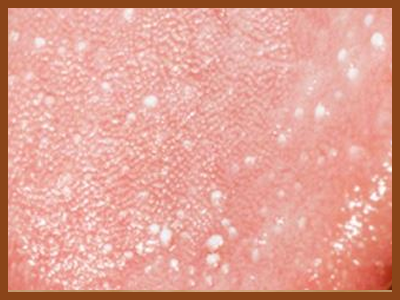
Possible Health Indication: High toxic burden, lung complications and/or malnutrition
For clues into your digestive health, stick out your tongue in the mirror and inspect it for color, residue and other abnormalities. If it is not pink with the appearance of small bumps called papillae, you may be experiencing a weakened immune system, trauma due to smoking and possibly cancer (12).
Here are some changes in the appearance of your tongue you should note and why: (11, 12, 13, 14)
White tongue or spots: The consistency may appear as cottage cheese and indicate a possible yeast infection known as oral thrush. Not often, leukoplakia appears as white and thick patches on your tongue that may be an early sign of cancer associated with tobacco use.
Abrasions: Ridges on the outward edges of the tongue can indicate poor nutrient absorption from the overconsumption of too many processed foods or the lack of whole foods with key nutrients.
Red tongue or spots: Traditional Chinese Medical practitioners often say that “the tongue is a window to the heart” because of the number of blood vessels present.
A deficiency in vitamin B-12 or folate can cause a reddening appearance. This change accompanied by pain to the tongue may indicate a more serious problem such as infection, nerve damage, coronary heart disease, and anemia. Symptoms may be the result of the inability of the intestines to absorb nutrients.
4. Cheeks:

Possible Health Indication: Metabolic abnormalities, rosacea and/or lung problems
Thyroid hormones can play a direct influence on the appearance of skin tissue on your face. Specifically, a slow metabolism associated with people who have hypothyroidism exhibit the appearance of thin cheeks that may also be coarse and scale-like (15).
The upper parts of the cheeks are linked to the health of your lungs which means that any change in color or loss of color can indicate lung toxicity or obstructions from breathing. Experiencing acne on your face is also associated with environmental contaminants from inhaling poor air quality and also from objects you allow on your face. Red, small and fluid filled acne that spans from one cheek to the other across the nose can indicate a symptom of rosacea (16).
Pillowcases hold dirt and oil that is transferred back to your skin during sleep possibly causing your breakouts. They also contain harsh chemicals from manufacturing. Similarly, harmful bacteria can make their way from your phone to your skin increasing clogged pores, inflammation and risk of bacterial infection.
5. Nose:
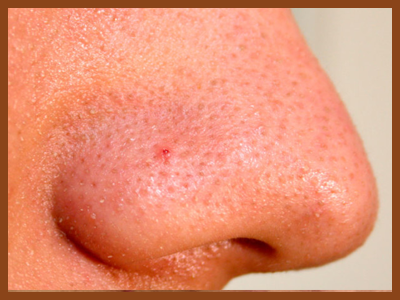
Possible Health Indication: Poor blood circulation, rosacea and/or malnutrition
This region is part of the “T zone” containing the greatest amount of sebaceous glands on the face of which most are located on the nose. Breakouts along the nose and cheeks can indicate a problem with your heart or blood pressure issue. Breakouts here can also occur from a poor diet leading to indigestion and inflammatory acne (17).
A diet lacking in essential fatty acids found in foods like wild-caught salmon, avocados, flaxseed and olive oil may be a reason for this type of underlying health ailment. Other problematic foods that promote high blood pressure include energy drinks, processed foods, too much meat consumption and not enough whole food fruits and vegetables.
6. Beneath the Eyes:
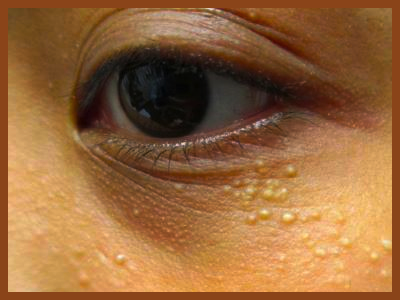
Possible Health Indication: Abnormal kidney functioning and/or thyroid dysfunction
The puffy or swollen appearance of the lower eyelids can be a sign of poor kidney function. Systemic diseases can also contribute to the abnormal appearance of skin beneath the eyes including thyroid dysfunction and even renal disease (18).
Severe drooping of the eyelids is associated with polycystic kidney disease (19).
7. Eyes:
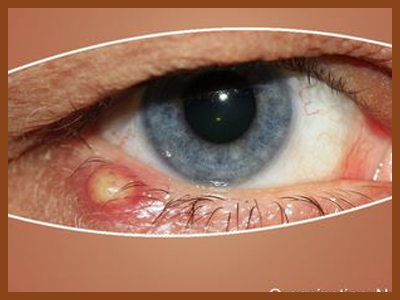
Possible Health Indication: Poor liver function, joint complications, poor digestion and/ or inadequate oxygen in the body
Research has shown that chronic acne can appear around the eyes as a result of systemic inflammation in various organs and lymph tissue (3). Acne around the eyes may be no less severe than swelling of eyelids and can be a symptom of poor liver function. Eye color itself may appear yellow indicating a weak liver.
Other abnormalities associated with eyes and your health include taking a look at the eye itself. Poor joint health can be reflected in small irises as well as an increased amount of white coloring. An opaque ring around the iris may be an indication of intestinal issues due to nutrient malabsorption and possibly excessive sugar and salt intake. A hazy blue colored ring however may be a sign of poor oxygen flow (20).
8. Skin Between the Eyebrows/ Temples:
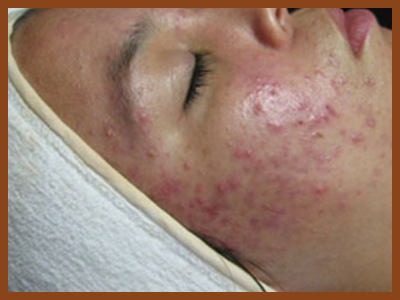
Possible Health Indication: Liver or gallbladder toxicity, inadequate blood circulation and/or bacterial infection
Problems with the liver or gallbladder from the overconsumption of alcohol, processed foods, high omega 6 and/or trans fats may manifest itself on this portion of the face. An unhealthy diet can contribute to indigestion and stress to the digestive tract causing toxins to accumulate and increase oxidative damage to the body.
Bacterial infection may also contribute to inflammation, clogged pores and acne outbreaks from poor hygiene practices in much the same way acne can develop on your cheeks.
9. The Right Side between the Eyebrows:
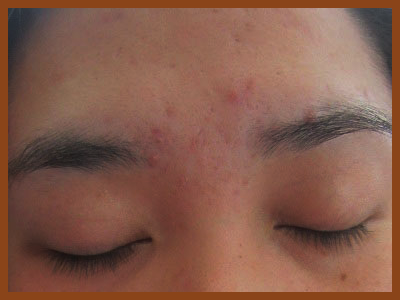
Possible Health Indication: Anxiety, weakened liver and/or hormonal changes
The right side of your face between the eyebrows may have a vertical line. This line is linked to individuals with emotional health problems including anger and increased anxiety.
The combination of exposure to toxins and stress creates a domino effect of stressors to the body causing inflammation, hormonal imbalances, poor detoxification pathways and consequently the appearance of blemishes. As a result, the liver is forced to work overtime to remove toxins and pollutants the skin is exposed to regularly.
10. Forehead:
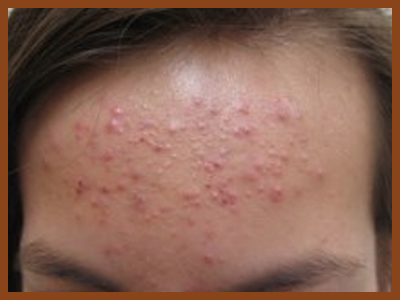
Possible Health Indication: Issues associated with dehydration, digestion problems in the small intestine and/or stress.
Individuals with small intestinal bacterial overgrowth (SIBO) will often develop acne in the center of the forehead while the sides tend to be more related to dehydration and the far corners are due to stress and poor cardiovascular function.
It is common for people to avoid applying moisturizer to the forehead because of oily skin but this may cause skin dehydration and irritation leading to acne. Moisturizers contain anti-inflammatory properties that can reduce acne even in oily skin types.
Strategies to Reduce Acne:
Major causes of acne are hormonal changes, bacterial imbalances, excessive sebum or oil production and the over production of follicular cells in the skin (21). However, a complete understanding of the pathology of acne remains uncharted territory.
We do know that you need to optimize your detox pathways and digestion to have healthy skin. Keep common disruptions to your health at a minimum by practicing the below strategies to improve your acne.
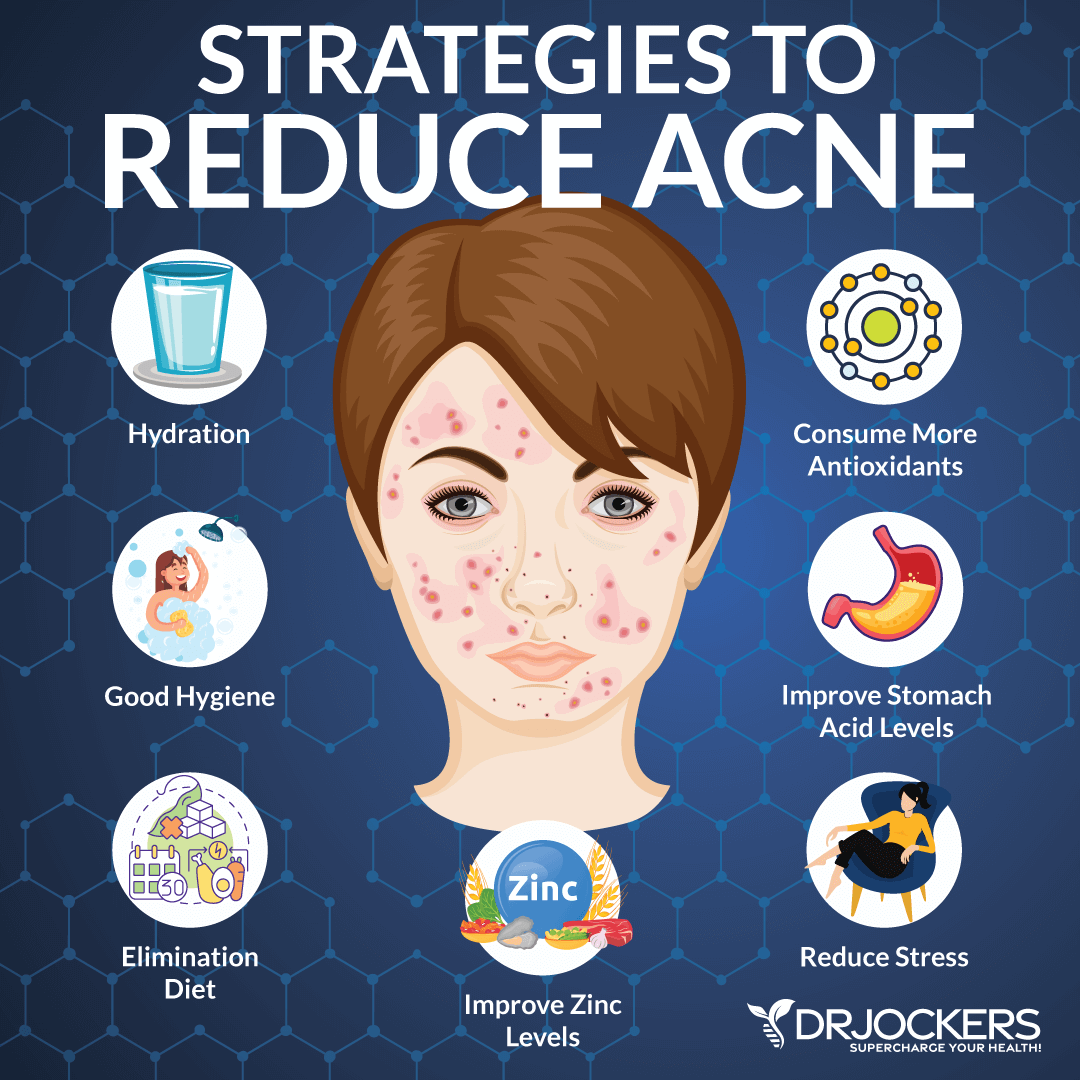
1) Hydration to Heal Acne
Hydration is SO IMPORTANT for reducing and eliminating acne. Water improves the health and functioning of the digestive system, lymphatic system and circulation system aiding in the removal of toxins from the body. Water helps to moisturize the skin from the inside out avoiding the irritation that comes from dehydration and accumulation of toxins beneath the skin.
Most of our society is chronically dehydrated but typically do not even feel thirst. To prevent acne, I recommend consuming a minimum of half your body weight in ounces but for the best results consume your full body weight in ounces. I weigh 160 lbs., so I would drink 160 oz of water, herbal teas, green drinks, fermented drinks, broth, etc. each day. Doing this keeps me super hydrated and helps my skin look great!
I recommend systems like Aquatru or the Berkey system for low-cost filtration. The best water is the UltraLux Triple Action Hydrogen Water Machine which is what I use at home as it is powered by molecular hydrogen which reduces oxidative stress in the body and improves immune function. Add a slice of lime for some extra flavor.

2) Good Hygiene to Heal Acne
Poor hygiene is one of the major factors implicated in exacerbating the effects of acne. Since its first identified treatment approach to acne in the 19th century, numerous cleansing agents have been developed in soaps, moisturizers, foams and abrasive washes to control acne. Maintaining proper facial hygiene to control acne doesn’t have to be as expensive as making sure you buy all of the topical cleansing remedies (22).
In fact, cleansing the face has been shown to cause irritation depending on an individual’s type of skin and age resulting in no benefit to reduce breakouts. Researchers have shown that certain antibacterial agents found in soaps such as hexachlorophene actually clog pores and cause blackheads (23).
Consider the following practices for good hygiene instead:
- Use natural antibacterial properties of essential oils such as frankincense and tea tree oil
- Use a mixture of water and non-toxic cleansers like castile soap to wash residue from your face and body nightly
- Shower as soon as possible following activities that produced sweat such as exercise and sports
- Use gentle exfoliating scrubs like a mixture of lemon and coffee grinds in problematic areas such as the chin, forehead and nose
- Clean makeup brushes, mobile phones, pillowcases and anything that touches the face at least once a week
- Switch to organic cotton pillowcases to avoid manufacturing chemicals and exposure environmental contaminants
3) Elimination Diet:
A healthy diet has been shown for years to directly influence the occurrence of acne breakouts. For instance, studies have shown that dairy, skim milk in particular, may directly contribute to an increase acne possibly as a result of added hormones and steroids to cows. A large group Nurses’ Health Study of almost 50,000 participants found that found acne outbreaks were more common in individuals who drank milk (24).
Other researchers have found that a Western diet high in processed foods, starches, and other foods that increase the glycemic load creates hormonal imbalances and contributes to acne problems (25). Common food allergens such as dairy, gluten, corn, soy, eggs, nuts and legumes cause inflammation and have been associated with acne due to a food intolerance or allergy (26).
If you are uncertain if a common food allergen is triggering your acne problems, consider an elimination diet. You will methodically remove and reintroduce foods into your diet to determine if your acne is a symptom of a problematic food.
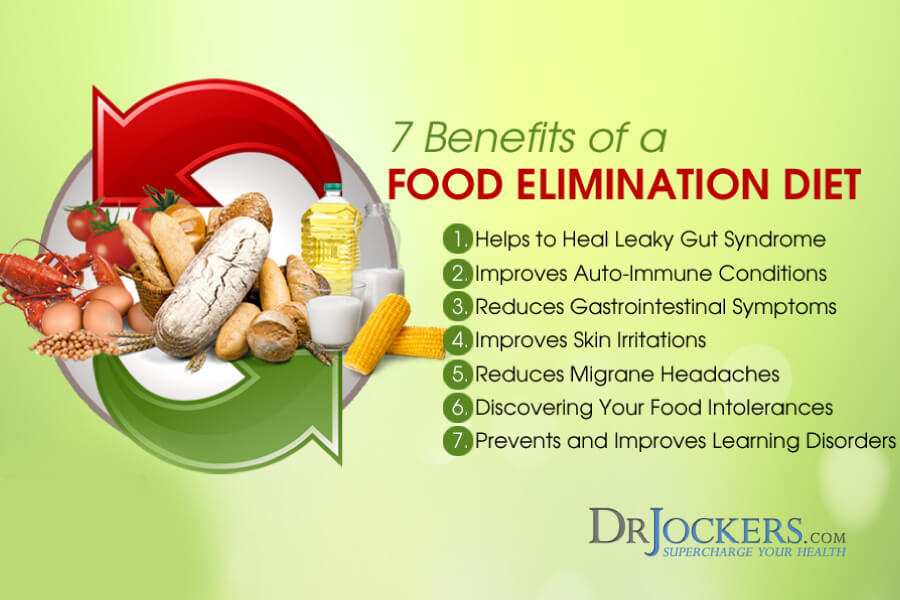
4) Consume More Antioxidants:
Acne treatment drugs commonly contain at least one antioxidant to combat free radical damage of the skin. Skip synthetic topical treatments altogether and eat a diet rich in antioxidants to prevent an increase in toxic and inflammatory agents like reactive oxygen species (ROS) that not only promote acne but also disease (27).
Not only does increasing your antioxidant intake including vitamins A, C and E, selenium, beta-carotene and various other plant derived nutrients improve blemishes but antioxidants improve your overall health and reduces the risks of skin cancers. Add plenty of antioxidant foods including herbs and spices shown to be potent scavengers of free radicals including: (25)
- Resveratrol and grape seed extract (grapes)
- Ellagic acid (raspberries)
- Lycopene (red fleshed fruits like tomatoes)
- Curcumin (turmeric)
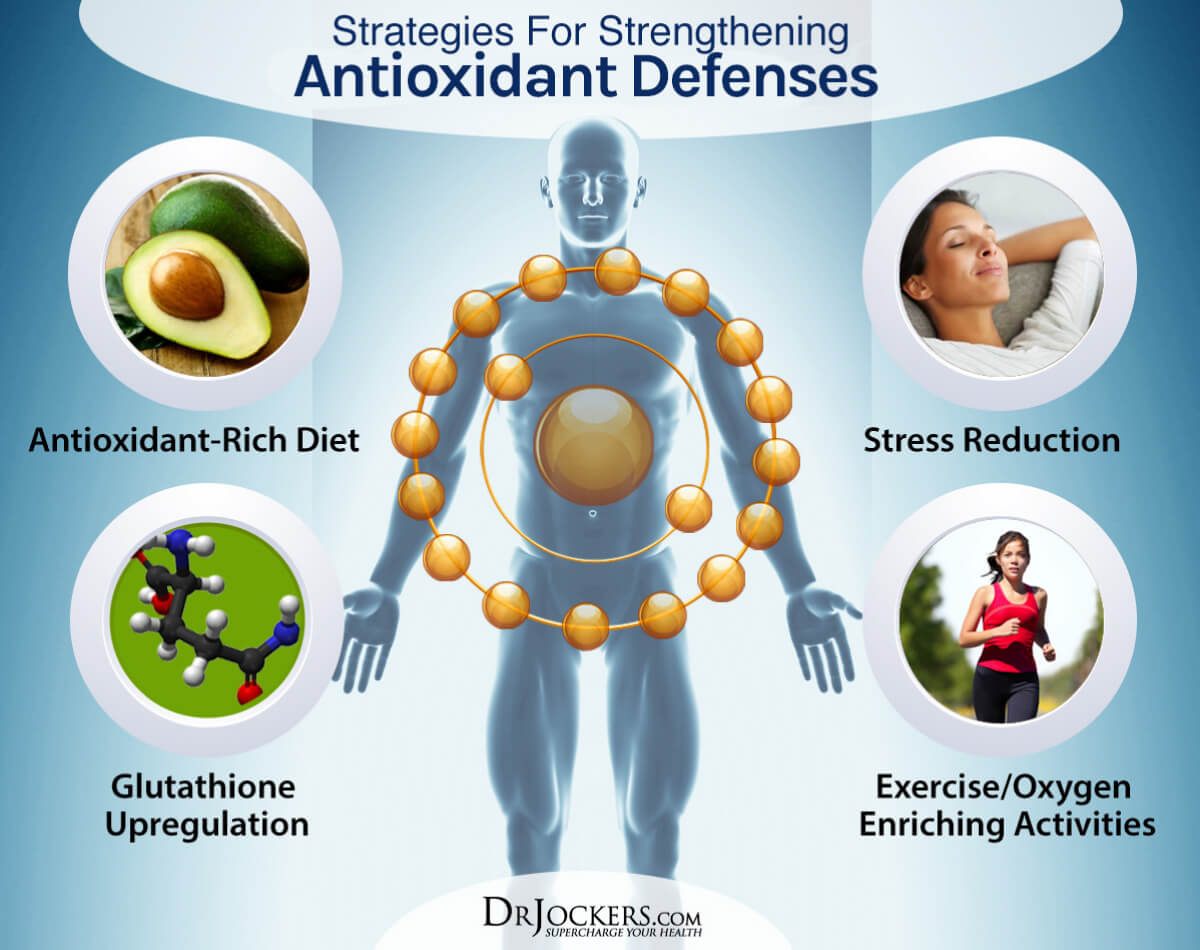
5) Improve Stomach Acid Levels to Heal Acne:
The “gut-skin” connection has received a considerable amount of attention over the last decade. We now understand that the internal environment of our organ’s secretions and the health of our gut directly impacts the health of our skin.
Hydrochloric acid is secreted by the stomach to breakdown food for easy absorption into bloodstream. Low levels of hydrochloric acid can cause nutrient deficiencies and digestive issues such as constipation, bloating and other signs that food has lingered in the intestines for too long. This problem further increases the likelihood of an imbalance gut microflora with elevated levels of pathogenic bacteria and possibly yeast (28).
Balance stomach acid with these tips:
- Increase fermented vegetables into your diet such as kimchi and homemade pickles and ginger.
- Adding ginger in any way into your diet is one of the best digestive aids. Add a variety of carminative herbs to your meals and herbal teas including caraway seeds, peppermint tea, cinnamon, rosemary and fennel seeds.
- Optimal hydration is key to reducing acne. Drinking plenty of purified fluids outside a 30 minute window of consuming a meal prevents its ability to dilute gastric juices.
- Especially if consuming a high protein meal, drink 1 tablespoon of apple cider vinegar or juice from half lemon in less than ¼ cup water to stimulate the release of stomach acid.
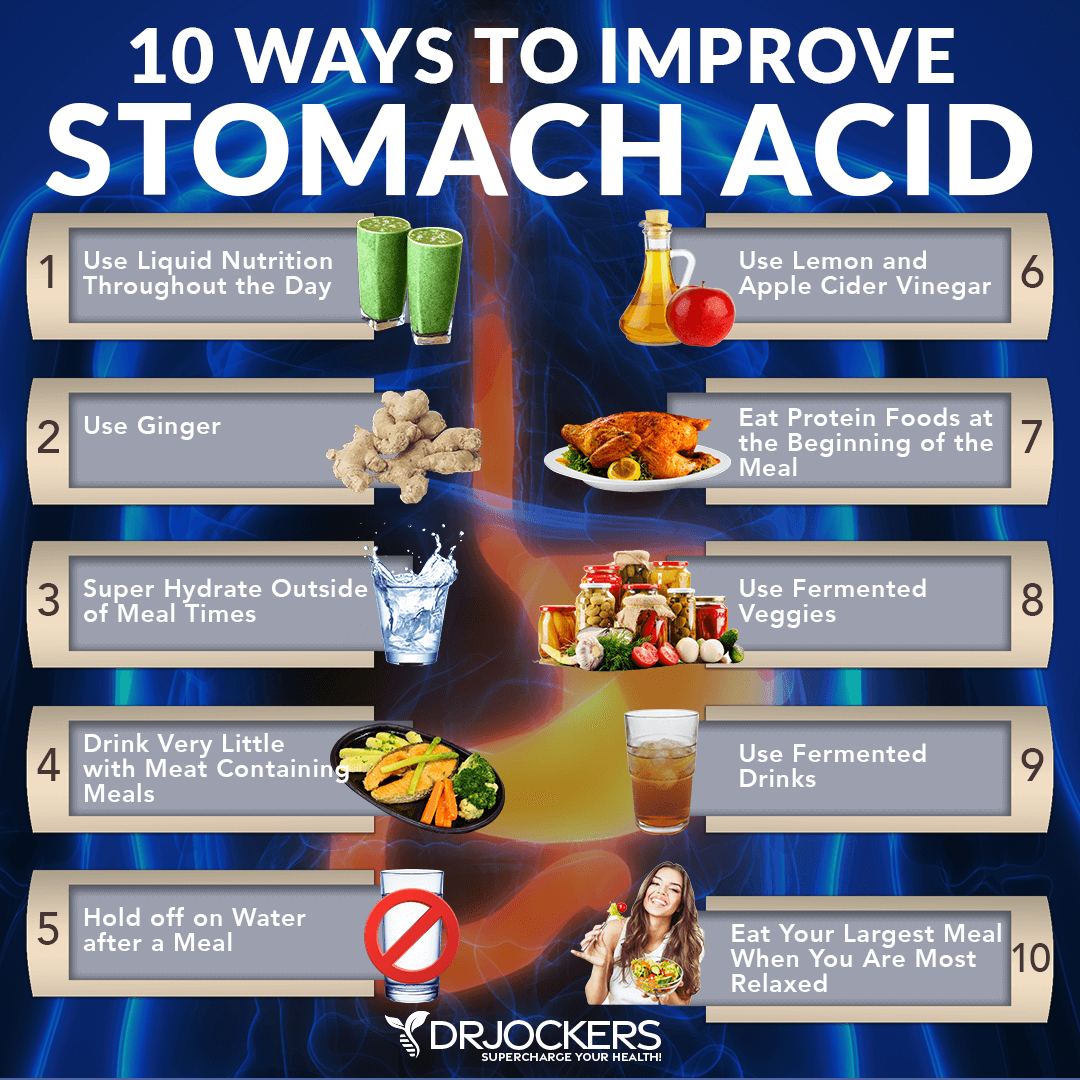
6) Reduce Stress to Heal Acne:
Stress adversely affects the body in every way and increasing the occurrence of breakouts is no different. Research shows that the severity of acne is directly correlated with the level of oxidative stress in individuals with acne and directly contributes to inflammation (27).
Participate in exercise regularly to lower stress hormones that contributes to hormonal imbalances and the occurrence of acne. Practicing stress reduction exercises such as meditation and yoga can help lower circulating stress hormones like cortisol. Exercise and yoga can also improve lymphatic drainage supporting the removal of toxins from the body.

7) Improve Zinc Levels to Heal Acne:
Zinc has been used in various forms for its therapeutic effects on improving health. In dermatology, zinc has antioxidant activity useful to preventing skin damage. It is also vital to bodily functions of the immune system and reproductive system.
Zinc reduces conditions associated with inflammatory acne by suppressing pro-inflammatory skin cells. It is is used to treat acne related to rosacea and a chronic skin disease called acne vulgaris (29).
One study found that low zinc levels were associated most greatly with acne apparent on the cheeks, forehead, and chin. Zinc deficiency can lead to severe health problems which impair growth and development, suppress a healthy immune response, and inhibits neurological and reproductive health. If you believe low zinc levels are cause for your breakouts avoid dairy shown to block the absorption of zinc and increase your consumption of zinc rich foods including: (24)
- Spinach
- Flax seeds
- Pumpkin seeds
- 100% grass-fed beef
- Cashews
- Cacao powder
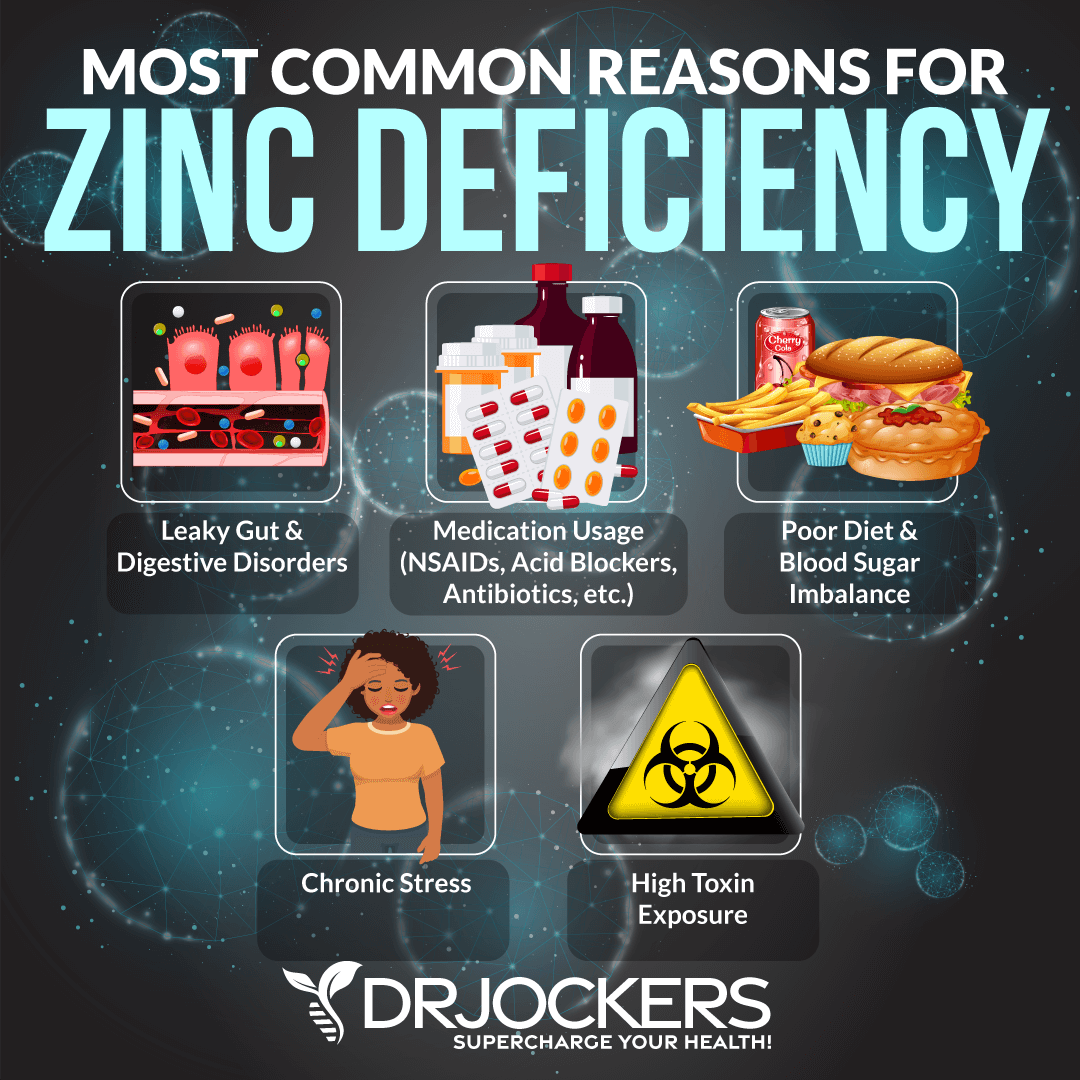
Proper Skin Care:
When it comes to your skin health, you cannot forget about proper skin care. Natural skin care is not difficult. All you have to do is to pay attention to the few simple tips below.
What to Avoid to Rejuvenate Your Skin:
- Long, hot showers
- Soap-free cleansing bars
- Anything with alcohol and perfumes
- Lanolin-based creams, lotions, ointments, etc.
- Toxic ingredients you’ve learned about earlier that can have a harmful effect on your skin.
What to Do to Rejuvenate Your Skin
- Eat a nutrient-dense diet and drink plenty of fluids to stay hydrated. Avoid alcohol, sugary drinks, and sodas. Drink 2 to 3 quarts of water daily. You can add lemon or lime as well. You may also add herbal tea or green juice to your routine. You can learn about a healthy anti-inflammatory diet that supports your skin here.
- Keep your home cool and humid to avoid dry skin reactions. Wear gloves in cold weather, and sunblock and protective clothing in hot weather.
- Wear cotton clothes whenever possible. Use natural, mild detergents.
- If you notice a rash after shaving, do not shave until its completely healed. Avoid perfumed after-shave.
- Start loving moisturizers. Natural moisturizers can prevent water loss by layering an oily substance over the skin to keep the water in or by attracting water to the outer layer from the inner layer of your skin. I recommend Purity Woods Age Defying Dream Cream which uses organic ingredients that help to soothe the skin and activate skin autophagy and moisturization.
Final Thoughts on Skin Health
Your skin is the largest organ that serves as a protective layer and performs essential tasks for your body. The health of your skin is important for your overall health. Your skin protects you from viruses, bacteria, and UV rays. It produces vitamin D, helps to regulate your temperature, and help you react to important changes affecting your body.
Taking care of your skin is important and you can do it naturally. Optimal hydration, eating an anti-inflammatory diet with trace minerals, using autophagy herbs, intermittent fasting, sleeping plenty, spending time outdoors, alternate showers, reducing stress, and healthy skin care routine are all important for your overall shine.
To rejuvenate your skin, I recommend Inflam Defense™, an autophagy-activating, an anti-inflammatory supplement that can protect your skin and overall body. To support a natural and healthy skincare routine I recommend Purity Woods Age Defying Dream Cream.
Following these 10 simple strategies to rejuvenate your skin, you can experience visible benefits. Your friends and family will compliment you for your glowing skin, and your body will thank you for your loving care as well.
Purity Woods Age-Defying Dream Cream
Healthy, radiant looking skin is certainly a confidence booster. It is a goal that everyone tries to achieve (and keep) throughout their lives. As we begin to get older, there are millions of tricks, tips and procedures out there to maintain the same healthy-looking skin we had when we were younger.
That’s why I would like to share my top choice for keeping skin looking young and healthy – the USDA Certified Organic Age-Defying Dream Cream from Purity Woods.
This anti-aging cream is truly a game changer when it comes to achieving and KEEPING your skin looking and feeling spectacular. Now you can save up to 38% on this amazing product, simply click here to learn more!
Inflammation Crushing Ebundle
The Inflammation Crushing Ebundle is designed to help you improve your brain, liver, immune system and discover the healing strategies, foods and recipes to burn fat, reduce inflammation and Thrive in Life!
As a doctor of natural medicine, I have spent the past 20 years studying the best healing strategies and worked with hundreds of coaching clients, helping them overcome chronic health conditions and optimize their overall health.
In our Inflammation Crushing Ebundle, I have put together my very best strategies to reduce inflammation and optimize your healing potential. Take a look at what you will get inside these valuable guides below!
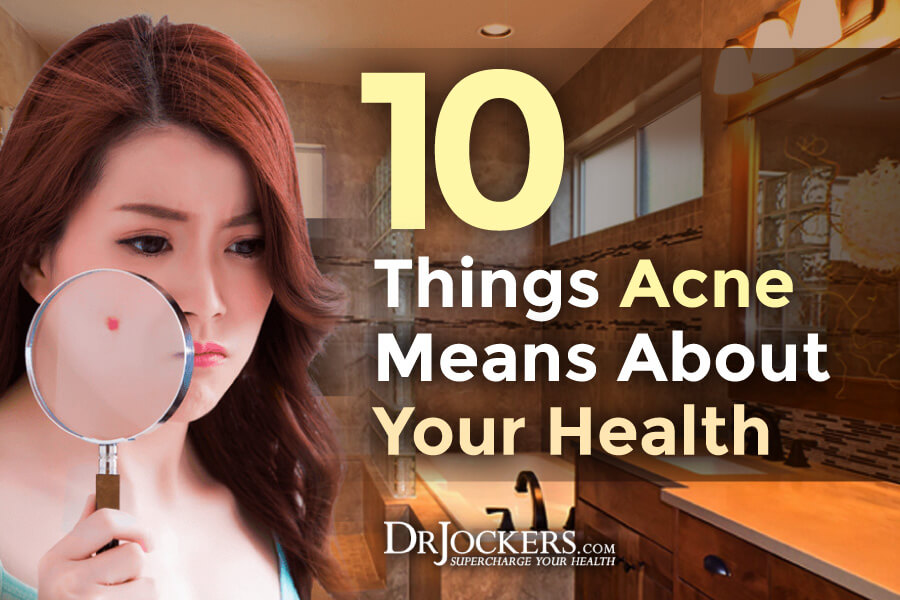


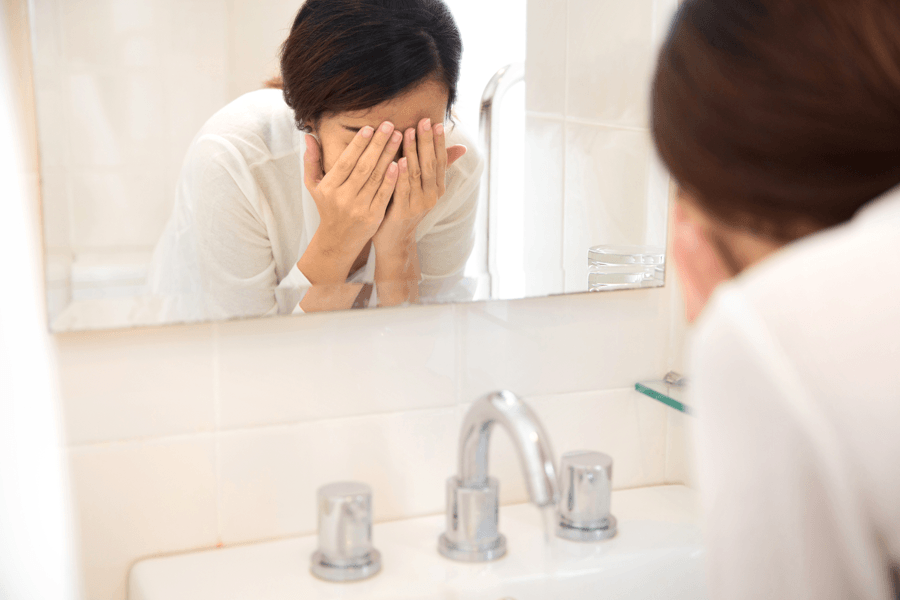
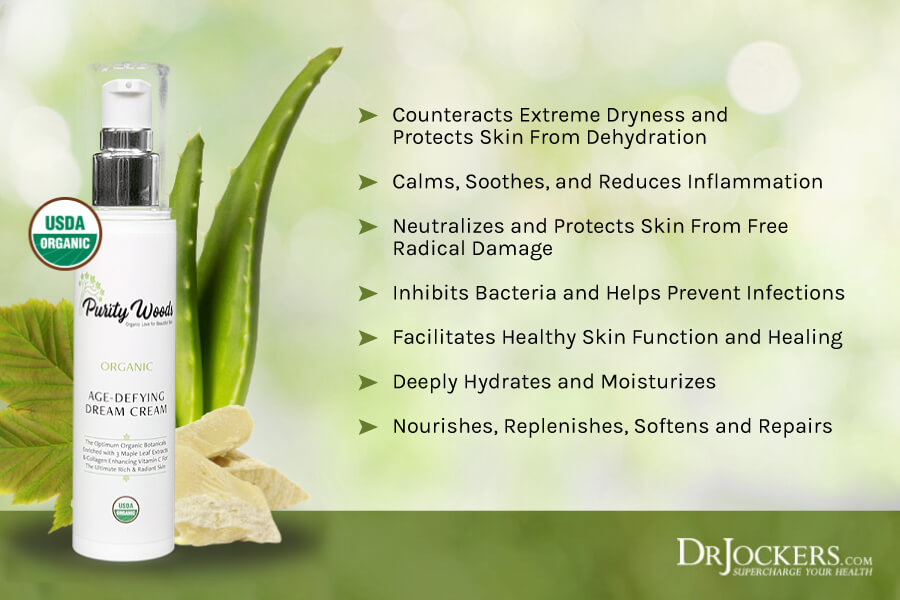
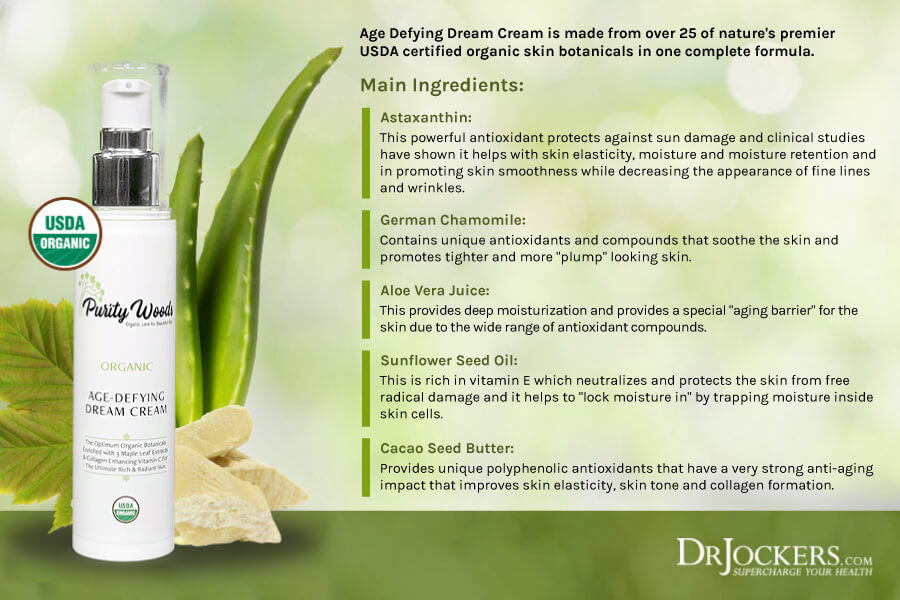
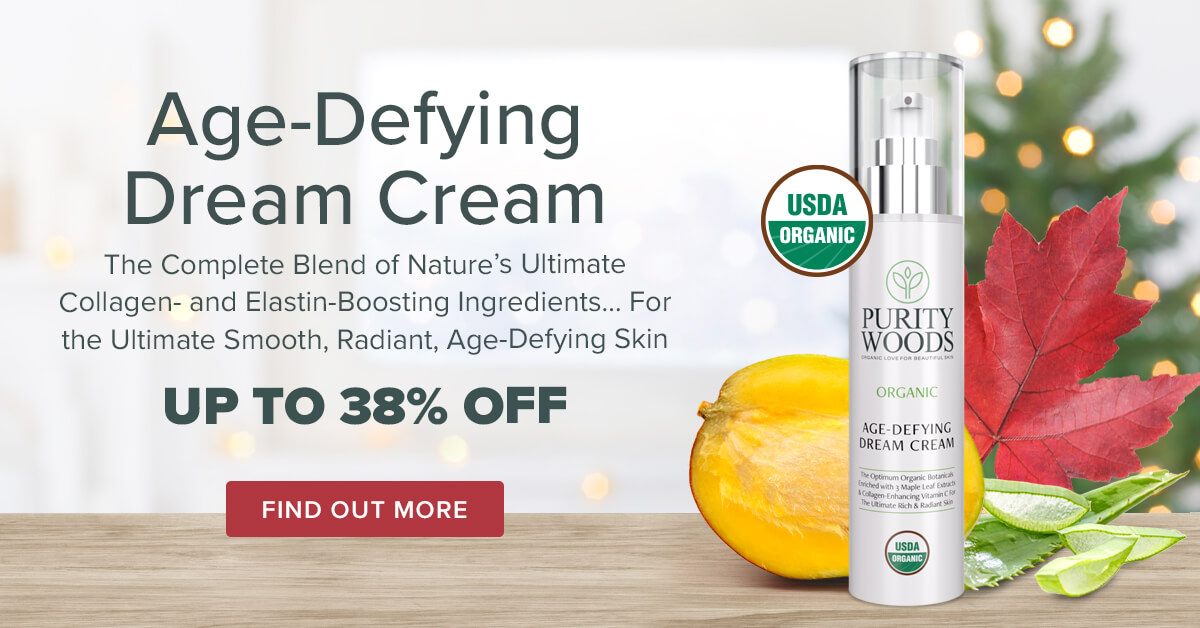




Dr. Jockers here I read in amazing accuracy about my life long ailment. Every little bit said I can confirm. No doctor has help my situation. In the course of 40 years betterment has come through my own learning. The suggestions made are what have made a difference on my skin.
So great to hear this Claudia! Blessings to you!
It was quite alarming to read that different acne appearances around your faces could mean different health deficiencies. Since my sister is complaining about things like acne under the eyes, I wonder if this could mean there’s something she isn’t aware of regarding her health. I’ll start helping her look for a dermatologist that can diagnose this condition of hers so we can help her before it gets worse.
Yes this is a very important consideration Afton.
Try changing to only A2 dairy. I have seen amazing results with family and friends when they changed to only A2 milk and other dairy products.